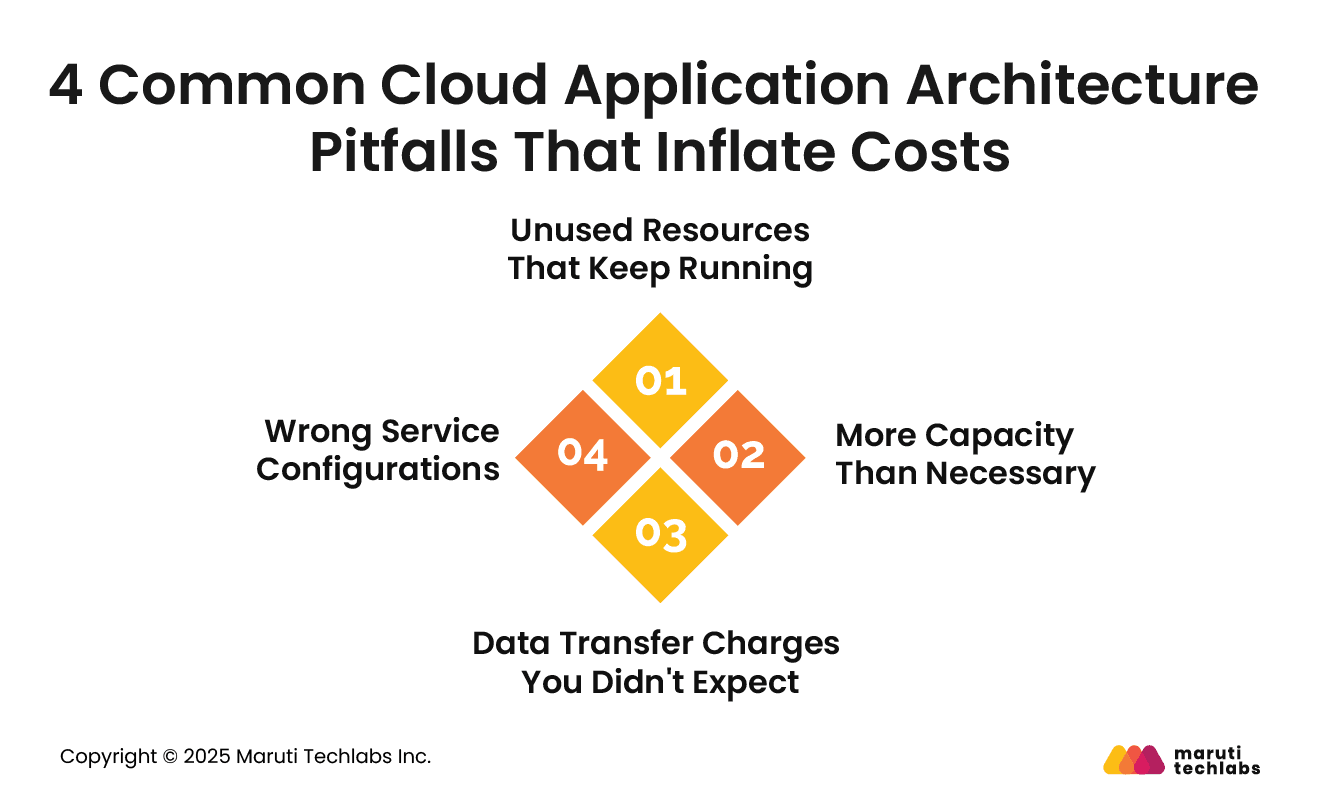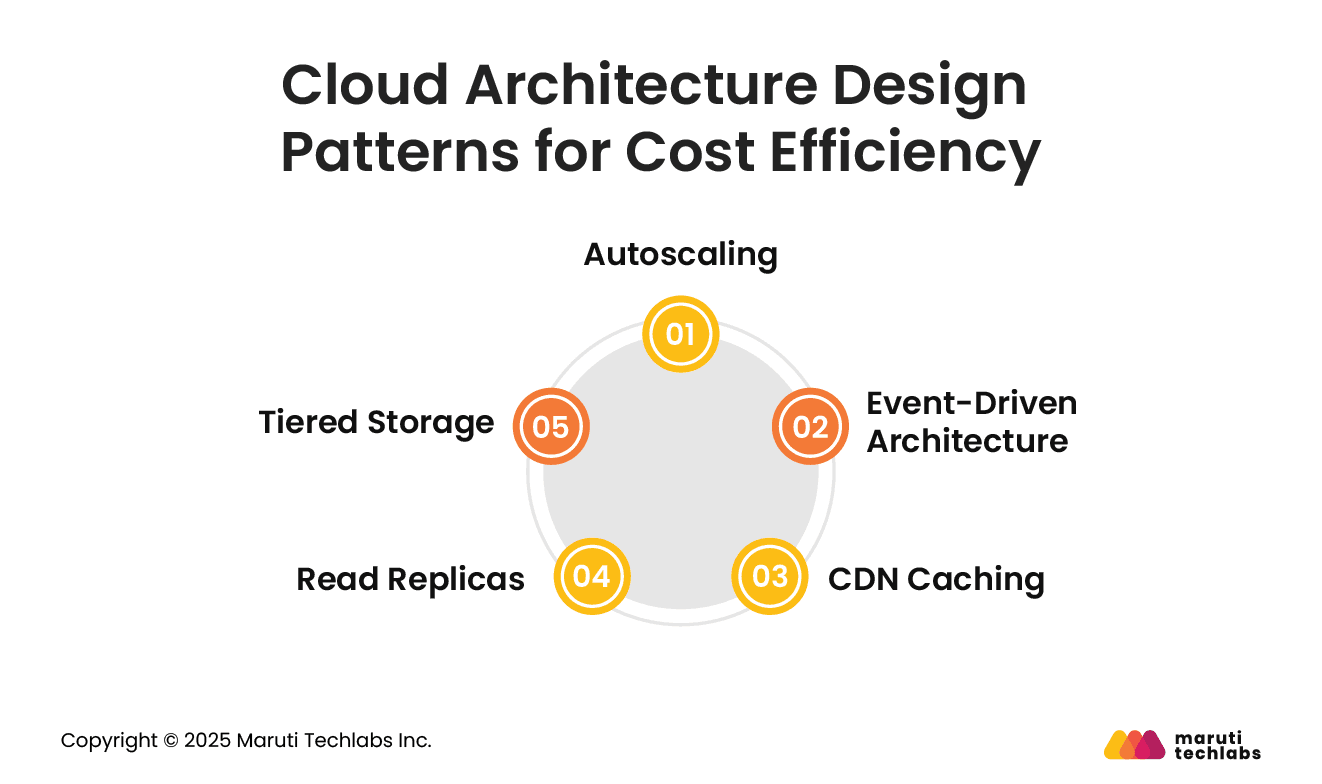

How to Reduce Cloud Costs for High-Traffic Systems






When your app or website experiences high traffic, it doesn’t always mean high costs if the cloud application architecture is set up correctly. The design of your cloud setup has a far greater impact on your spending than the number of users visiting your platform.
Websites and mobile apps are often the main touchpoints between businesses and customers. That’s why, when traffic increases, a well-configured cloud setup helps things run smoothly without incurring excessive costs. If the design isn’t right, even average traffic can slow things down and increase costs.
In this blog, we’ll explore common architecture mistakes to avoid inflating costs, budget-friendly architecture patterns, smart stack choices, and practical strategies to help you build a cloud system that performs well under pressure, without breaking the bank.
When it comes to cloud costs, traffic isn't always the problem. More often, it's the way your cloud environment is set up. Even small things, such as forgetting to turn off unused services or selecting the wrong setup, can quietly add to your cloud bill.
Here are four common mistakes that often go unnoticed and some easy ways to avoid them.

It's easy to forget about a virtual machine you spun up for testing or a storage volume that's no longer needed. However, these resources continue to run and charge you even when they're not in use.
Many teams opt for larger servers or higher storage capacity "just to be safe." But if you're using only a small fraction of that power, you're wasting money every single day.
When your systems send data from one service or region to another, your cloud provider charges for it. These fees often go unnoticed but can grow quickly if there’s a lot of back-and-forth happening.
Using incorrect settings, such as an improperly configured load balancer or selecting the wrong server type, may not seem like a significant issue. Still, they can increase your costs or even create security problems.
Your cloud architecture design setup can significantly impact your spending. Some patterns not only help manage high traffic but also reduce waste and make better use of resources. Let’s look at a few that are known to keep cloud costs in check.

Autoscaling is a method used by many cloud companies that enables an app to add or remove resources as demand changes automatically. This helps the app handle user needs without requiring manual intervention, ensuring that users always receive what they need. It’s an integral part of cloud services because it helps businesses use their resources better and spend less by not using too much or too little.
Instead of running all parts of your app all the time, this setup starts specific parts only when needed, like during a user request or a file upload. It’s helpful when your app doesn’t need to be active all the time. You only pay when something runs. Serverless services, such as AWS Lambda, are commonly used for this purpose.
A CDN keeps copies of your website’s content in places closer to your users. That way, your main server doesn’t have to do all the work, and you save on data costs. It also means your site loads quicker, especially for people who are far from your main server.
These are extra copies of your database that handle read-only requests. By sending reads to these replicas, your main database doesn’t get overloaded. That means better performance and no need to upgrade to an expensive, high-capacity server.
You don’t need the fastest storage for every type of data. Files that aren’t accessed often, such as old backups, can be moved to more cost-effective storage options. This keeps your storage bill in control while still keeping everything available when needed.
The tools and technologies you choose in your cloud setup can have a big impact on your monthly bill. Every decision, whether it's the services you choose or how you manage your resources, can affect both your cloud costs and the flexibility of your system over time.
One common decision is whether to go with serverless or fully managed services. Serverless platforms, such as AWS Lambda, only run when something needs to happen, making them ideal for short tasks or apps with fluctuating traffic. On the other hand, managed services keep running in the background, which can be more reliable for steady workloads. Picking the right one depends on what your app needs and how predictable the traffic is.
Choosing between Lambda and Kubernetes also affects cost. Lambda is simple to set up, but it can become expensive with high traffic or memory-intensive tasks. It charges based on the duration of your code's execution and the amount of memory it consumes. Kubernetes (like AWS EKS) runs on EC2 servers, which can be more cost-effective for applications that run continuously or require additional resources. If you're using spot or reserved instances with Kubernetes, you can further reduce the cost.
Another factor is vendor lock-in. Using tools that only work with one cloud provider can limit flexibility later and make it hard to switch. A cloud-agnostic approach, utilizing tools that work across multiple providers, can help mitigate this.
Even small tooling choices can significantly impact the cost. Some tools are easier to use but come with higher pricing. Others may require more effort to set up, but they can save money in the long run.
Ultimately, selecting the right stack is about striking a balance between cost, performance, and long-term flexibility.
When planning cloud costs, it's essential to consider both peak periods and regular traffic.
Many teams rely on reactive scaling, adding resources only after traffic increases. The problem is that this usually kicks in a little too late. By the time your system scales, users might already be seeing slow pages or errors. It also struggles with sudden traffic spikes, such as those during a sale or a major campaign, which can result in missed opportunities or lost sales.
Predictive scaling is a smarter way to prepare. It uses past traffic trends to predict when demand will rise and prepares your system in advance before the spike occurs.
To make this work, look at your traffic logs. Identify your busiest times and plan accordingly. You can also move non-urgent tasks, such as reports or backups, to quieter hours.
This kind of planning helps keep things running smoothly without wasting money.
To improve performance and support growing traffic, we assisted a US-based used car-selling company in transitioning from a single-node setup to a fully scalable microservices architecture utilizing Kubernetes and Docker.
The results were impactful. The company can now scale individual parts of the system based on demand. Deployments happen without downtime, and traffic is handled more efficiently with better load balancing. Services are easier to manage and more secure due to isolation and high availability. Feature rollouts are faster, and the system stays stable, even during high-traffic spikes or unexpected issues.
This transformation not only improved system performance but also ensured that the company could support future growth without encountering technical issues. Their cloud setup is now flexible, reliable, and better equipped to handle changing traffic needs. Read the detailed case study here.
A cloud architecture design that’s both cost-efficient and scalable doesn’t have to be complicated. By avoiding common mistakes, such as unused resources or misconfigured services, and utilizing patterns like autoscaling, CDN caching, and event-driven setups, you can keep your cloud bills in check while handling high traffic smoothly.
Your tech stack also plays a significant role—choosing the right mix of tools, services, and scaling strategies can make a big difference in both cost and performance. As seen in our case study, with the right approach, it’s possible to build a system that grows with your business without breaking the bank.
If you’re looking to optimize or migrate your cloud setup, we’re here to help. At Maruti Techlabs, we specialize in building scalable, secure, and cost-effective cloud application architectures. Contact us for Cloud Migration services.
And while performance and cost matter, so does security. Our end-to-end Cloud Security Services ensure your high-traffic systems stay protected, compliant, and resilient—so you can scale confidently without increasing risk.
Looking for expert cloud application development Chicago businesses trust? Get in touch with Maruti Techlabs to build your optimized cloud strategy.
Want to estimate your optimization savings or migration costs? Use our Cloud Migration Cost Calculator to plan smarter and reduce expenses effectively.
Cloud architecture refers to the design of how all cloud components, such as servers, storage, databases, and applications, work together. It helps deliver services over the internet, making systems scalable, flexible, and cost-efficient for businesses.
Cloud native architecture is a way of building applications specifically for the cloud. It utilizes modern tools, such as containers, microservices, and automation, to make apps easier to scale, update, and manage across any cloud environment.
A hybrid cloud architecture combines public and private clouds. It lets businesses run some services in their own data centers and others in the cloud. This provides greater flexibility, control, and cost savings while supporting various types of workloads.
The main types are public cloud, private cloud, hybrid cloud, and multi-cloud. Each has a different setup based on how resources are shared, who manages them, and how flexible or secure the system needs to be.


